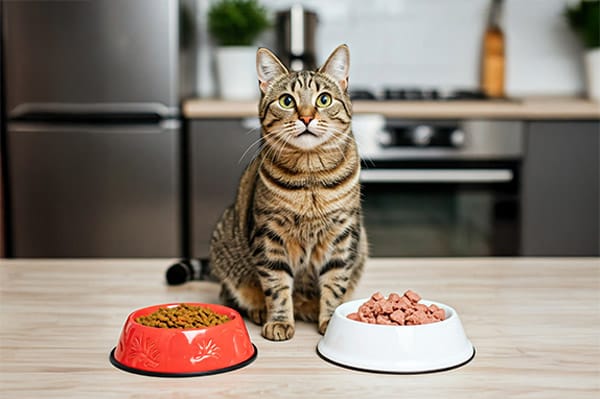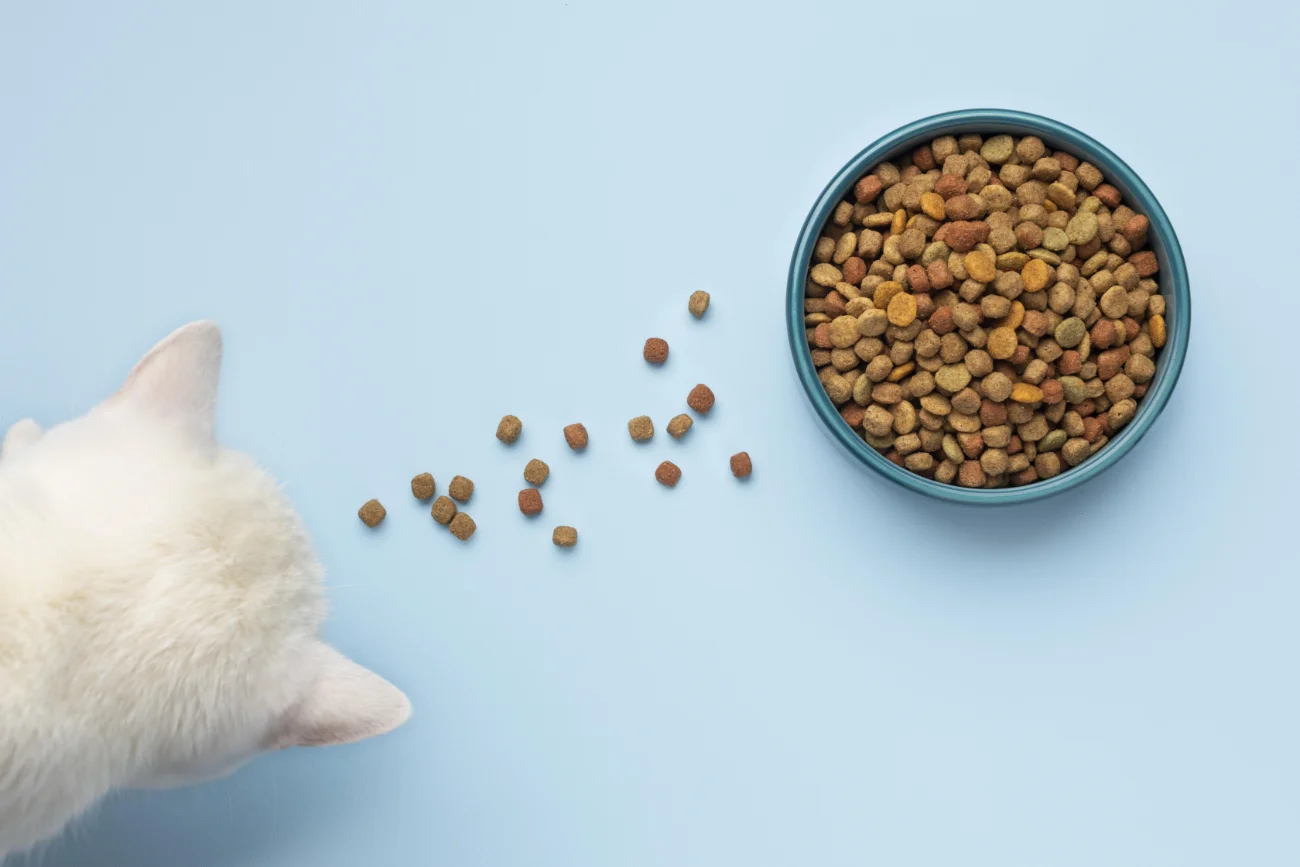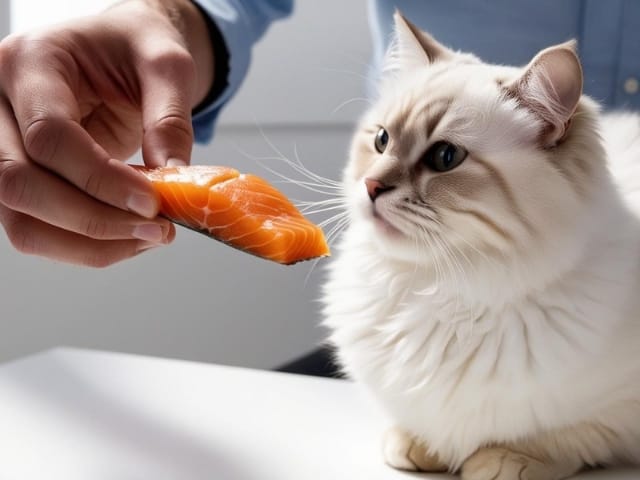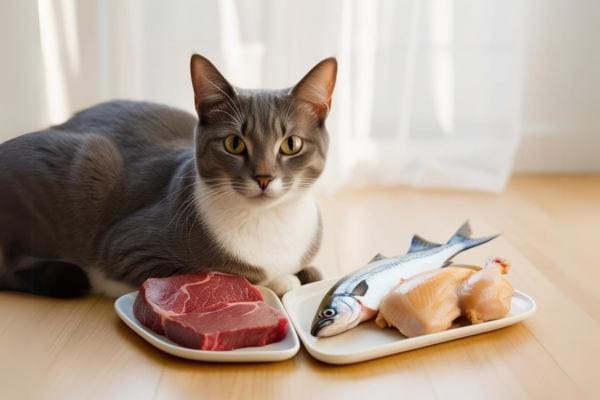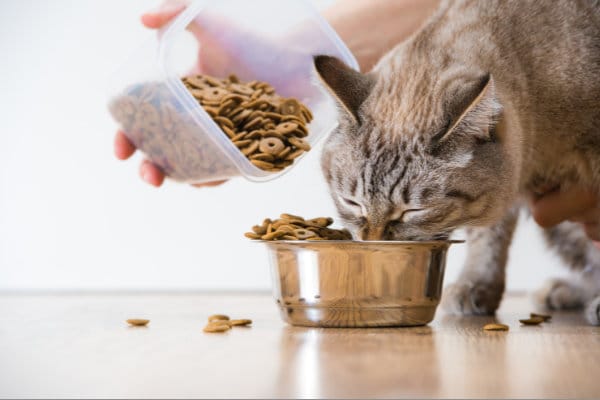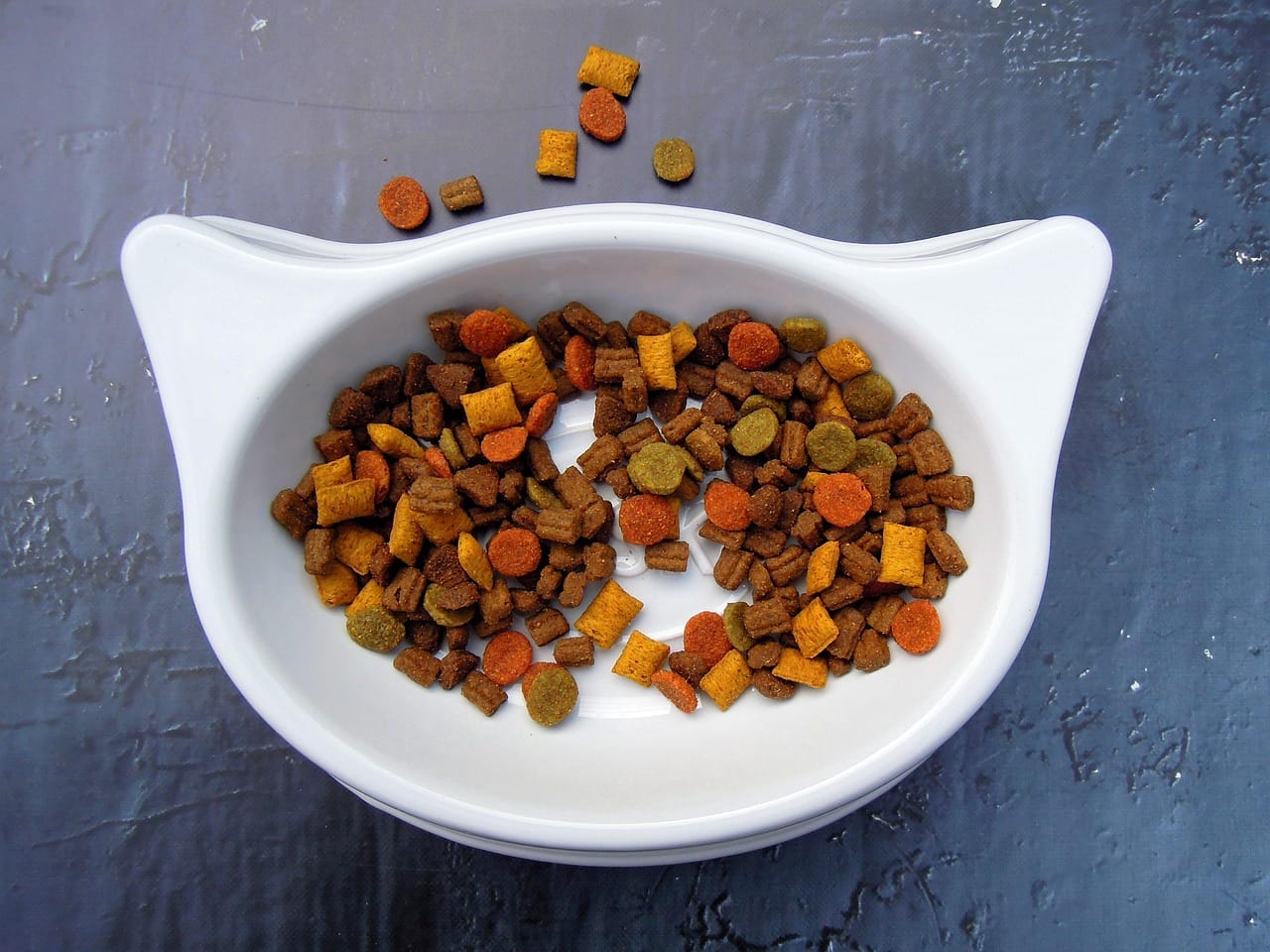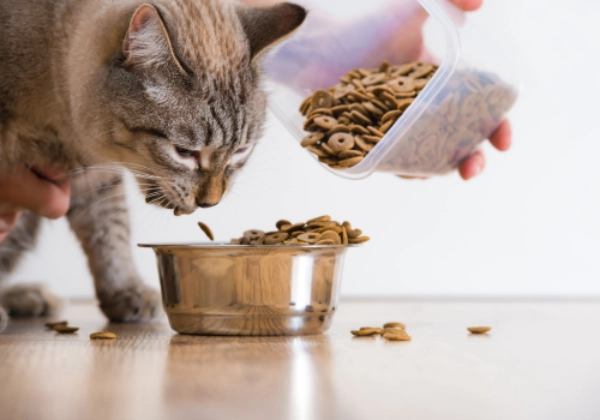Feeding your cat the right amount of food can feel like solving a puzzle, and I know how confusing all those feeding charts can be. As a cat parent, you want to make sure your furry friends stay healthy and happy without over or underfeeding them. We’ve put a complete cat feeding guide to help you figure out exactly how much food your cat needs based on their age, weight, and lifestyle. Whether you’re a new cat owner or just looking to fine-tune your feeding routine, I’ll walk you through everything you need to know about proper portions in 2025.
Understanding the Basics of Cat Nutrition
The foundation of your cat’s health starts with proper nutrition, and I want to help you navigate the necessary feline dietary needs. As a cat parent, you’ll want to ensure your furry friend receives the right balance of proteins, fats, vitamins, and minerals to maintain optimal health. I’ve found that understanding your cat’s nutritional needs doesn’t have to be complicated – it’s about knowing what to look for and how to provide it consistently.
Essential Nutrients Your Cat Needs
Needs of your feline friend are specific and unique – cats are obligate carnivores, which means they must eat meat to survive. I recommend focusing on high-quality protein sources as the main component of your cat’s diet. Your cat requires taurine (an amino acid found in animal tissues), arachidonic acid (a fatty acid), and vitamin A in their pre-formed state, which they can only get from animal sources.
Wet vs. Dry Food: Making the Right Choice

Some cat owners ask me whether they should choose wet or dry food, and I tell them both have their benefits. I’ve found that wet food can help increase your cat’s water intake and may be easier for senior cats to eat, while dry food can be more convenient and helps maintain dental health.
Understanding the moisture content is key – wet food contains about 75-80% water, which can be beneficial for cats who don’t drink enough water on their own. I suggest considering a combination of both types to give your cat the best of both worlds.
The Role of Treats in Your Cat’s Diet
Now let’s talk about everyone’s favorite topic – treats! I always tell cat parents that treats should make up no more than 10% of your cat’s daily caloric intake. You can use treats as a training tool or to bond with your cat, but moderation is the key to maintaining a healthy weight.
With treats, quality matters as much as quantity. I recommend looking for treats that contain real meat as the first ingredient and avoiding those with artificial preservatives or excessive fillers. Consider breaking treats into smaller pieces to make them last longer while keeping calories in check. • Check your cat’s body condition score monthly • Weigh food portions using a kitchen scale • Adjust portions based on activity level • Monitor weight changes weekly • Watch for signs of hunger or fullness after meals Examples of daily feeding guidelines: – 5 lbs cat: 1/4-1/3 cup dry food – 8 lbs cat: 1/3-1/2 cup dry food – 10 lbs cat: 1/2-2/3 cup dry food Signs to watch for: – Overfeeding: Weight gain, lethargy, leaving food in bowl – Underfeeding: Visible ribs, begging, increased aggression
Why Proper Feeding Matters for Your Cat’s Health
You might think feeding your cat is as simple as filling up their bowl when it’s empty, but I want to share why it’s so much more than that. Your cat’s diet directly impacts their energy levels, weight, immune system, and overall quality of life. Getting the portions right can mean the difference between a thriving pet and one that struggles with health issues.
The Connection Between Diet and Longevity
Proper nutrition can add years to your cat’s life and life to their years. I’ve seen how cats that maintain a healthy weight through controlled portions tend to live longer, more active lives. When you provide balanced meals in the right amounts, you’re helping your cat avoid many age-related health issues and supporting their body’s natural functions.
Health Risks of Improper Feeding
The connection between overfeeding and health problems is clear – I’ve noticed how excess weight can lead to diabetes, joint problems, and heart disease in cats. On the flip side, underfeeding can weaken your cat’s immune system and cause nutritional deficiencies that affect their coat, energy levels, and overall well-being.
With improper feeding habits, your cat might face serious health challenges that could have been prevented. I’ve learned that obesity in cats can reduce their lifespan by up to two years, while underfeeding can lead to liver problems and muscle wasting. That’s why finding the right balance is so important for your feline friend’s health.
Signs of Good Nutritional Balance
Longevity and health go hand in hand when your cat maintains a healthy weight and receives proper nutrition. I look for signs like a shiny coat, consistent energy levels throughout the day, and regular bathroom habits to know if my cat’s diet is on track. Your cat should maintain a visible waist when viewed from above, and you should be able to feel their ribs with gentle pressure.
To monitor your cat’s nutritional health effectively, I recommend checking these key indicators: clear, bright eyes; clean, healthy teeth and gums; and appropriate weight for their frame. Watch for your cat’s enthusiasm during mealtimes and their activity levels between meals – these can tell you a lot about whether their nutritional needs are being met.
Factors That Influence Feeding Amounts
All cats are unique, and I’ve learned that several key factors determine how much you should feed your feline friend. Here are the main elements I recommend considering when planning your cat’s meals:
- Your cat’s current age and life stage
- Daily activity level and indoor/outdoor status
- Body condition and weight goals
- Breed-specific characteristics
- Health conditions or special dietary needs
The success of your feeding plan depends on regularly monitoring these factors and adjusting portions accordingly.
Age-Based Requirements
Feeding requirements change dramatically as your cat grows from a kitten to a senior. I always tell cat parents that kittens need 2-3 times more calories per pound than adult cats, usually requiring 3-4 small meals daily. Adult cats typically need fewer calories, while senior cats may need 20% fewer calories than their adult counterparts.
Activity Level and Lifestyle
Now let’s talk about how your cat’s lifestyle affects their food needs. I’ve noticed that indoor cats generally need about 20-30% fewer calories than outdoor cats because they’re typically less active. Your indoor cat might spend most of their day sleeping and playing occasionally, while outdoor cats burn more energy exploring and hunting.
Requirements vary significantly based on your cat’s daily routine. If you have an especially playful indoor cat who spends hours chasing toys, they might need more food than a less active indoor cat. I suggest monitoring your cat’s weight and energy levels to fine-tune their portions.
Breed and Size Considerations
For different cat breeds, I recommend adjusting portion sizes based on their natural body type and size. Larger breeds like Maine Coons naturally need more calories than smaller breeds like Siamese cats. I always consider a cat’s frame size when determining their ideal portion size.
A cat’s breed-specific traits can influence their metabolism and eating habits. I’ve found that some breeds, like Persians, tend to be less active and need fewer calories, while others, like Bengals, have higher energy needs due to their active nature.
Step-by-Step Guide to Calculating Portions
Unlike guessing games with your cat’s food portions, I’m here to help you create a precise feeding plan tailored to your feline friend. You’ll need to consider several factors to determine the right amount of food, including your cat’s age, weight, activity level, and overall health condition.
| Cat’s Life Stage | Daily Calories Needed |
| Kitten (0-12 months) | 200-250 calories/day |
| Adult Indoor Cat | 150-200 calories/day |
| Senior Cat (11+ years) | 130-180 calories/day |
Determining Your Cat’s Ideal Weight
Knowing your cat’s ideal weight is the foundation of proper portion control. I recommend using the Body Condition Score (BCS) chart—you should be able to feel your cat’s ribs but not see them, and your cat should have a visible waist when viewed from above.
Daily Calorie Requirements
Guide yourself through calculating your cat’s daily calorie needs by using their ideal weight as a starting point. I suggest multiplying your cat’s weight in pounds by 20 to get the base calorie requirement for an average adult cat.
Calorie requirements vary based on your cat’s lifestyle – if your cat is particularly active, you might need to increase the daily amount by 20-40%, while less active indoor cats may need 20-30% fewer calories than the base calculation.
Portion Size Calculations
Ideal portion sizes depend on the type of food you’re feeding your cat. I always check the calorie content per cup or can on your cat food package, then divide the daily calorie requirement by the calories per serving to determine how much to feed.
To make this practical for your daily routine, I recommend using a standard measuring cup or kitchen scale to portion out food accurately. If you’re feeding both wet and dry food, split the total daily calories between them – I typically suggest 80% wet food and 20% dry food for optimal nutrition. • Check your cat’s body condition weekly by running your hands along their sides • Weigh your cat monthly and adjust portions if needed • Look for signs of hunger like excessive begging or lethargy • Monitor energy levels and coat condition • Split daily portions into 2-3 meals • Adjust portions based on activity level changes • Watch for weight changes after switching foods • Consider seasonal adjustments for outdoor cats
Life Stage-Specific Feeding Guidelines
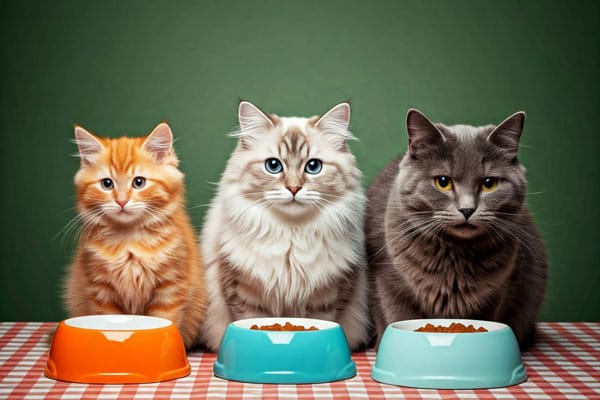
Your cat’s nutritional needs evolve dramatically throughout their life, and I’ve found that adjusting portions according to their life stage is key to maintaining optimal health. I always tell my readers that following age-appropriate feeding guidelines helps prevent obesity and ensures your furry friend gets the right nutrients at the right time.
Kitten Feeding Schedule (0-12 months)
On average, I recommend feeding kittens 3-4 times daily until they reach 6 months of age. Your kitten needs about 200-250 calories per day, divided into these meals. I’ve noticed that free-feeding can work well for kittens under 6 months, but you should start transitioning to scheduled meals as they grow older.
Adult Cat Portions (1-7 years)
Clearly, adult cats have different nutritional requirements than growing kittens. I suggest feeding your adult cat twice daily, with each meal containing roughly 1/4 to 1/2 cup of dry food, depending on their weight and activity level. For wet food, I recommend about 3 ounces per meal for a 10-pound cat.
A healthy feeding routine for your adult cat should take into account their activity level and body condition. I’ve found that indoor cats typically need fewer calories – about 20-30 calories per pound of body weight daily. You’ll want to monitor your cat’s weight monthly and adjust portions if you notice any significant changes.
Senior Cat Nutrition (7+ years)
Feeding your senior cat requires special attention to their changing metabolism and potential health issues. I recommend reducing portion sizes by about 20% compared to adult cats, as older cats tend to be less active. For a 10-pound senior cat, I suggest about 280-330 calories per day, divided into 2-3 smaller meals.
Stage-specific nutrition becomes increasingly important as your cat ages. I’ve learned that senior cats often benefit from more frequent, smaller meals – typically 3-4 times daily. You’ll want to monitor their water intake and consider incorporating more wet food into their diet to support kidney health and maintain proper hydration.
Creating the Perfect Feeding Schedule
Keep in mind that establishing a consistent feeding schedule is one of the most important aspects of your cat’s daily routine. I’ve found that cats thrive on predictability, and setting regular mealtimes helps regulate their digestion, behavior, and overall well-being. When you maintain a steady feeding schedule, you’ll notice your cat becomes more relaxed and content, knowing exactly when to expect their next meal.
Meal Frequency Options
Clearly, you have several feeding frequency options to choose from, and I recommend selecting the one that best fits both your lifestyle and your cat’s needs. I typically suggest feeding adult cats twice a day, spacing meals about 12 hours apart. However, if you have a kitten under six months old, you might want to provide 3-4 smaller meals throughout the day to support their rapid growth and high energy needs.
Timing Your Cat’s Meals
One of the best approaches I’ve discovered is to feed your cat at the same times each day, typically once in the morning and once in the evening. I find that setting feeding times around your own meal schedule can make it easier to maintain consistency. When you establish this routine, your cat will quickly adapt and learn to anticipate mealtimes, reducing begging behavior throughout the day.
Your cat’s internal clock is remarkably precise, and I’ve noticed they often start gathering near their feeding area just before their regular mealtime. This natural rhythm helps maintain healthy eating habits and can prevent overeating, as your cat learns to expect food at specific times rather than having constant access to it.
Adapting to Your Cat’s Routine
Timing your cat’s meals around their natural activity patterns can make a significant difference in their eating habits. I recommend observing when your cat is naturally most active and hungry, then adjusting their feeding schedule accordingly. Most cats are crepuscular, meaning they’re most active during dawn and dusk, making these ideal times for their main meals.
Meal planning should be flexible enough to accommodate both your schedule and your cat’s natural rhythms. I’ve found that setting up automatic feeders can help maintain consistency when your routine varies, ensuring your cat never misses a meal even when you’re running late or away from home.
Types of Feeding Methods
Once again, I want to help you understand the different ways you can feed your cat to maintain their optimal health. Here are the main feeding approaches I recommend considering for your feline friend:
- Free-feeding: Leaving food available all day
- Scheduled meals: Feeding set portions at specific times
- Mixed approach: Combining dry food access with wet food meals
- Portion control: Measuring exact amounts based on weight
- Age-specific feeding: Adjusting portions for life stages
Assume that your cat’s ideal feeding method will depend on their age, weight, activity level, and overall health condition.
| Feeding Method | Best Suited For |
|---|---|
| Free-feeding | Active, self-regulating cats |
| Scheduled meals | Overweight cats, multiple cat households |
| Mixed approach | Most adult cats |
| Portion control | Weight management cases |
| Age-specific | Kittens, senior cats |
Free-Feeding Approach
You might find that free-feeding works well if your cat naturally regulates their food intake. I’ve seen many cats who maintain a healthy weight with this method, especially active indoor-outdoor cats who burn more calories throughout the day.
Scheduled Meal System
Assuming you want more control over your cat’s daily food intake, a scheduled meal system might be your best choice. I recommend this method if your cat needs weight management or if you’re feeding multiple cats with different dietary needs.
Approach this method by dividing your cat’s daily recommended portions into 2-3 meals, typically serving them at the same times each day. I find that most cats adapt well to eating breakfast around 7am and dinner around 6pm.
Mixed Feeding Strategies
An effective compromise I often suggest is combining different feeding methods to give your cat the best of both worlds. You could leave a measured portion of dry food available while offering wet food at set meal times.
With this flexible approach, I’ve found that cats maintain better hydration through wet food while enjoying the independence of having some dry food available. You’ll want to adjust the proportions based on your cat’s specific needs and preferences.
Also Read : Complete Cat Nutrition Guide 2025: What Your Feline Friend Really Needs to Thrive
Special Dietary Considerations
Despite having a general understanding of cat feeding guidelines, I know that certain situations require special attention to your cat’s nutritional needs. You’ll need to adjust portions and feeding frequencies based on your cat’s specific life stage, health status, and activity level. I’ve found that consulting with your vet about these special circumstances helps create the most appropriate feeding plan for your feline friend.
Feeding Pregnant and Nursing Cats
While your pregnant cat may seem extra hungry, I recommend gradually increasing her food intake by 25% during pregnancy and up to three times the normal amount when she’s nursing kittens. You should provide her with high-quality kitten food, as it contains the extra calories and nutrients she needs during this demanding time. I suggest keeping food available throughout the day, allowing her to eat small meals whenever she needs to maintain her energy.
Managing Weight Issues
Assuming your cat needs to lose or gain weight, I’ve learned that making gradual adjustments to portion sizes works better than dramatic changes. If your cat needs to slim down, I recommend reducing their daily portions by 10% and monitoring their weight every two weeks. For underweight cats, you can increase portions by 10-15% and offer multiple small meals throughout the day.
Pregnant cats require special attention to their diet, and I’ve found that working closely with your vet to develop a weight management plan is imperative. You’ll want to track your cat’s progress with regular weigh-ins and adjust portions accordingly. I always tell my readers that weight management is a gradual process that requires patience and consistency.
Accommodating Health Conditions
Weight management isn’t the only health concern that affects feeding – I know that conditions like diabetes, kidney disease, or food allergies require specific dietary modifications. You’ll need to follow your vet’s recommendations carefully regarding food type, portion sizes, and feeding frequency. I’ve seen how the right diet can make a significant difference in managing these conditions effectively.
This approach to feeding cats with health conditions often requires a combination of prescription diets and careful portion control. I recommend keeping a feeding journal to track your cat’s food intake, symptoms, and response to dietary changes. You can share this information with your vet to help fine-tune the feeding plan as needed. • Monitor your cat’s weight monthly and adjust portions by 1/8 to 1/4 cup increments • Feed pregnant cats 25% more food during pregnancy, up to 3x normal amount when nursing • Look for signs of hunger like excessive meowing or lethargy • Measure food precisely using a standard measuring cup • Weigh your cat weekly when on a weight management plan • Split daily portions into 3-4 smaller meals for better weight control • Check body condition score monthly – you should be able to feel ribs but not see them • Adjust portions seasonally – indoor cats may need less food in winter • Document food intake and weight changes in a feeding journal
Understanding Pet Food Labels
To help you make informed decisions about your cat’s nutrition, I want to guide you through the sometimes confusing world of pet food labels. When you’re standing in the pet food aisle, these labels can seem like they’re written in a different language, but I’ll break down exactly what you need to look for to ensure your furry friend gets the best possible nutrition.
Nutritional Information Breakdown
Food labels typically show percentages of protein, fat, fiber, and moisture content, which I always check first when selecting cat food. You’ll want to look for foods with protein listed as the first ingredient, and I recommend choosing options with at least 26% protein for adult cats and 30% for kittens. When I examine moisture content, I keep in mind that dry food usually contains 10% or less, while wet food can be up to 78%.
Serving Size Guidelines
Assuming your cat is a healthy adult, I suggest following these basic guidelines: 1/4 to 1/3 cup of dry food per 3-4 pounds of body weight daily, divided into two meals. For wet food, I recommend about 3 ounces per 3-4 pounds of body weight daily. However, these are just starting points – you’ll need to adjust based on your cat’s age, activity level, and overall health.
With regular monitoring of your cat’s weight and body condition, you can fine-tune these portions. I always tell my readers to watch their cat’s waistline – you should be able to feel their ribs with gentle pressure but not see them.
Quality Indicators
Any high-quality cat food should list a specific type of meat (like chicken, turkey, or fish) as the first ingredient. I look for foods that avoid generic terms like “meat by-products” and instead use clear, identifiable ingredients. When I’m shopping, I also check for artificial preservatives and try to choose products that use natural alternatives.
Quality assurance markers I always look for include AAFCO (Association of American Feed Control Officials) statements, country of manufacture, and batch numbers for traceability. These indicators help me ensure I’m choosing safe, nutritionally complete food for my cat. • Check your cat’s body condition score every 2-3 weeks • Measure portions using a standard measuring cup • Adjust portions up or down by 10% if needed • Monitor weight monthly • Watch for signs of hunger (excessive meowing, begging) or fullness (leaving food) • Consider your cat’s age, weight, and activity level when portioning • Split daily portions into at least two meals • Keep a feeding journal to track changes
Smart Feeding Tips and Tricks
Now that you understand the basics of cat nutrition, let’s explore some practical feeding strategies that I’ve found helpful in my experience with cats. I always recommend establishing a consistent feeding schedule, measuring portions accurately, and monitoring your cat’s eating habits closely. The key to successful feeding lies in finding the right balance between portion sizes and your cat’s individual needs.
Portion Control Strategies
Smart portion control starts with using the right measuring tools – I suggest investing in a digital kitchen scale or dedicated measuring cups for pet food. You’ll want to adjust portions based on your cat’s age, weight, and activity level, following these guidelines:
- Adult cats (4-10 lbs): 1/4 to 1/2 cup dry food daily
- Senior cats: Reduce portions by 20-30%
- Active cats: Increase portions by 10-15%
- Indoor cats: Decrease portions by 10%
The most reliable way to check if you’re feeding the right amount is to monitor your cat’s weight monthly.
Food Storage Best Practices
While proper food storage might seem straightforward, I’ve learned that it plays a vital role in maintaining your cat’s food quality and safety. You should store dry food in an airtight container in a cool, dry place, and always keep wet food refrigerated after opening. The original packaging often provides the best protection, so I recommend keeping the food in its bag inside your storage container.
Control moisture exposure by using clips to seal open wet food pouches and storing them in sealed containers. I suggest marking the opening date on wet food containers and using them within 3-5 days for optimal freshness and safety.
Feeding Multiple Cats
Best practices for feeding multiple cats include setting up separate feeding stations in different rooms to prevent food competition and ensure each cat gets their proper portion. I recommend feeding cats at the same time but in different locations to minimize stress and potential conflicts over food.
Tips for managing multiple cat households include using microchip-activated food bowls, establishing specific feeding zones for each cat, and monitoring individual eating habits. You can also try elevated feeding stations for older cats and ground-level ones for younger pets to create a more comfortable dining experience for everyone.
Common Feeding Mistakes to Avoid
After years of working with cat owners, I’ve noticed several recurring mistakes that can impact your cat’s health and weight. The good news is that these common feeding errors are easy to fix once you know what to look for. I’ll help you identify and correct these issues so you can ensure your feline friend maintains a healthy weight and good eating habits.
Portion Control Errors
To get your cat’s portions right, I recommend using an actual measuring cup instead of eyeballing the amount of food. I’ve found that many cat owners accidentally overfeed their pets by using random scoops or filling the bowl whenever it looks empty. When I work with pet parents, I always suggest following the feeding guidelines on your cat food package as a starting point, then adjusting based on your cat’s weight, age, and activity level.
Schedule Inconsistencies
You might not realize it, but cats thrive on routine, and irregular feeding times can lead to behavioral issues and weight problems. I’ve seen how establishing set meal times helps cats maintain healthy digestion and prevents them from becoming overly hungry or anxious about their next meal.
Plus, when you feed your cat at consistent times each day, you’ll find it easier to monitor their appetite and quickly notice if something’s off. I always tell my readers that if your cat typically eats at 7 AM and 6 PM, try to stick within 30 minutes of these times, even on weekends.
Treat Management
On average, treats should make up no more than 10% of your cat’s daily caloric intake. I’ve noticed that it’s easy to lose track of how many treats you’re giving throughout the day, especially if multiple family members are involved. When I work with pet parents, I suggest keeping a treat log or designating a daily treat allowance to avoid overfeeding.
Portion control is key when it comes to treats – I recommend breaking larger treats into smaller pieces to make them last longer and reduce caloric intake. You can also use your cat’s regular kibble as treats during playtime or training sessions, which helps maintain their daily caloric balance while still providing positive reinforcement.
Monitoring Your Cat’s Food Intake
All pet parents should keep a close eye on their cat’s eating habits, as this can tell you a lot about their overall health and wellbeing. I always recommend establishing a consistent monitoring routine that includes tracking both the amount of food your cat consumes and their eating patterns throughout the day.
Weight Tracking Methods
To effectively monitor your cat’s weight, I suggest weighing them at the same time each week using a digital scale. You can either weigh yourself while holding your cat and subtract your weight, or use a pet-specific scale for more accurate results. I find it helpful to keep a simple weight tracking journal or use a pet monitoring app to spot any concerning trends early on.
Behavioral Indicators
Clearly understanding your cat’s normal eating behavior will help you notice when something’s off. I’ve learned that a cat who suddenly becomes more demanding around food time or starts waking you up earlier for meals might be dealing with insufficient portions. You should also watch how they approach their food bowl and how long they spend eating.
Cats will often show you through their behavior if they’re getting the right amount of food. I’ve noticed that when cats constantly beg for food despite regular meals, or if they leave food in their bowl consistently, these are important signals about their portion sizes that you shouldn’t ignore.
Health Warning Signs
Indicators of feeding issues can manifest in various ways, and I always tell cat owners to watch for specific signs. If your cat starts losing or gaining weight rapidly, shows decreased interest in food, or begins eating much more than usual, it’s time to consult your vet. I’ve found that changes in coat quality, energy levels, and litter box habits can also signal that your feeding routine needs adjustment.
Food-related health issues can develop gradually, so I recommend keeping a detailed log of any changes you notice. Watch for signs like vomiting after meals, excessive thirst, or changes in stool consistency, as these might indicate that your current feeding plan needs modification.
- Check your cat’s weight weekly and record it
- Measure food portions using a standard measuring cup
- Monitor eating speed and frequency
- Watch for food bowl behavior (hovering, walking away)
- Note changes in energy levels after meals
- Track water consumption alongside food intake
- Document any unusual eating patterns
- Assess body condition score monthly
- Consider your cat’s age when adjusting portions
- Look for signs of satisfaction after meals
Troubleshooting Feeding Issues
Many cat parents face challenges when it comes to feeding their feline friends, and I’ve found that most issues can be resolved with patience and the right approach. Whether you’re dealing with a picky eater, an overeater, or food aggression, understanding your cat’s behavior is the first step to creating a healthy feeding routine.
Dealing with Picky Eaters
Some cats can be incredibly selective about their food, and I’ve learned that sudden pickiness might indicate an underlying issue. If your cat becomes finicky, I recommend gradually transitioning to new foods over 7-10 days, mixing increasing amounts of new food with their current meal. You can also try warming the food slightly to enhance its aroma or offering wet food at room temperature.
Addressing Overeating
While it’s natural for cats to eat throughout the day, I’ve noticed that some cats tend to overeat when given unlimited access to food. If your cat is gaining too much weight, I suggest switching to scheduled feeding times and measuring portions carefully. You can use interactive feeders or food puzzles to slow down their eating pace and make mealtime more engaging.
Another effective strategy I recommend is splitting their daily portion into smaller meals – typically 3-4 times per day. This helps maintain stable blood sugar levels and keeps your cat feeling satisfied throughout the day while preventing them from gorging on large portions at once.
Managing Food Aggression
If you notice your cat becoming aggressive during feeding times, I want you to know this is a common issue that needs careful attention. In multi-cat households, I’ve found that providing separate feeding stations in different rooms can significantly reduce tension and allow each cat to eat peacefully.
To help manage food aggression, I recommend establishing a consistent feeding schedule and using elevated feeding stations or separate areas for each cat. You might also consider microchip-activated food bowls that only open for specific cats, ensuring each pet gets their proper portion without competition.
Conclusion
With this in mind, I want to emphasize that finding the right portion size for your cat isn’t a one-size-fits-all approach. I recommend starting with the feeding guidelines based on your cat’s weight and age, then adjusting as needed while monitoring their body condition. You’ll know you’re on the right track when your cat maintains a healthy weight, shows good energy levels, and has a visible waist when viewed from above.
I encourage you to stay observant of your cat’s eating habits and overall health. If you notice your cat leaving food in their bowl regularly, or if they seem constantly hungry despite following the recommended portions, it’s time to reassess. Your veterinarian can be your best ally in fine-tuning your cat’s diet, so don’t hesitate to reach out to them for personalized advice. By paying attention to these details, you’ll help your feline friend maintain optimal health throughout 2025 and beyond.
FAQ
Q: How do I calculate the right daily portion size for my adult cat?
A: Calculate portions based on your cat’s ideal body weight: • 8-10 lbs cats need 1/2 to 3/4 cup dry food daily • Split into 2-3 meals throughout the day • Reduce portions by 25% for indoor or less active cats • Increase by 20% for highly active outdoor cats • Always measure food using a standard measuring cup • Adjust portions if you notice weight changes over 2-3 weeks
Q: What are the signs my cat is getting too much or too little food?
A: Monitor these specific indicators: Overfeeding signs: • Visible belly sag when walking • Cannot feel ribs when gently pressing sides • Reduced grooming and activity levels • Food left in bowl after meals Underfeeding signs: • Visible spine and hip bones • Increased begging behavior • Lethargy or irritability • Eating non-food items
Q: How should I adjust feeding amounts for different life stages?
A: Follow these age-specific guidelines: Kittens (0-12 months): • 3-4 small meals daily • Double the adult portion size Adult cats (1-7 years): • 2-3 meals daily at standard portions Senior cats (7+ years): • Reduce portions by 20% • Add water to food for hydration Pregnant/nursing cats: • Increase portions by 50% • Provide constant access to fresh food

